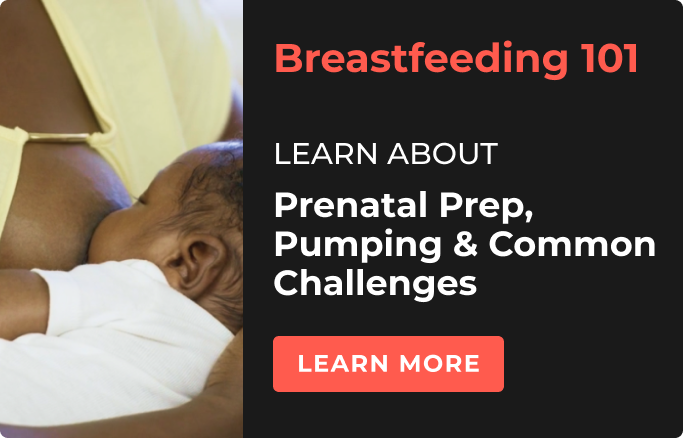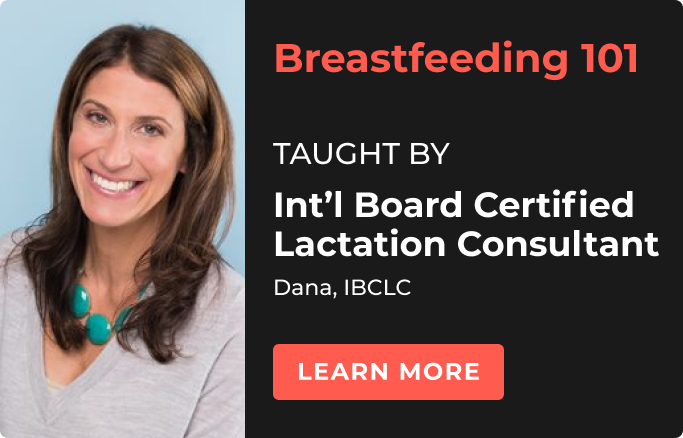So your parental leave is ending. How the heck did that happen?!
For some, it’s an exciting occasion, the chance to focus on something new. For others, it’s more somber because they know they’ll miss their baby like crazy. And for most… it’s both of those things with an added dash of anxiety thrown in. Because you are no longer managing the normal work-life things you know about; you’re also managing new working parent-life things. And if you are breastfeeding, one of those new working parent things is pumping.
We asked our expert and certified lactation consultant Dana for her top tips for nursing parents returning to work, including when to pump, where to pump, and how to safely store what you pump. Here’s what she said.
1. Don’t stress too soon.
Yes, all good things come to an end… but don’t stress about the transition unnecessarily. In those early weeks, put work on the back burner. Take it off the stove altogether, and just focus on adjusting to life as a new parent.
2. Start building a (small) freezer stash.
So, stressing about work too early? Bad. But incorporating an extra pump session into your daily routine in the early weeks can be good, according to Dana. She recommends you can begin pumping between Weeks 2 and 4 after birth. This typically gives most parents enough time to regulate their milk supply and establish a comfortable latch. If you are still working out the breastfeeding kinks, however, it’s fine to wait another week or two and continue to focus on breastfeeding.
Since your milk production is highest in the early morning hours, you’ll probably yield more output if you pump in the morning versus in the afternoon or evening, but do what works best for you. How will you add in a pumping session? Essentially, you will breastfeed baby normally (i.e., offer both sides), and then, when baby is done, you will simultaneously pump both sides immediately after. Whatever milk you get is a bonus to store. Don’t worry about having enough milk at the next feeding - your body will be ready to breastfeed baby again. Empty breasts make milk more quickly than full breasts. With this pumping strategy, some people pump 1 extra ounce a day and others 3 or more ounces. Remember, the quantity doesn’t matter because it’s all “bonus milk.”
Keep reminding yourself that slow and steady wins the race, you just need a small cushion so you can breathe easier when you are not around to nurse baby. And, if you need to build a larger freezer stash at a faster rate, build in more than one pump session a day. Just be cautious and remember this can lead to an oversupply.
3. Talk with your employer about your needs… and know your rights!
No matter how much experience you think your manager has with breastfeeding, you must speak to them clearly about what you’ll need to pump successfully at work. So what do you need, exactly? A clean, private place with access to an outlet for your electric pump (not a bathroom!), and approximately 20-30 minutes every few hours to pump.
And if for any reason, you feel badly asking for these things, don’t. Most employers are required by federal law under the Patient Protection and Affordable Care Act to provide them. Some states had additional protections as well. If you are looking for resources about how to have this conversation with your employer, you can find them here.
4. Plan your pumping schedule around your baby’s feeding schedule.
This means during those first weeks back at work, you’ll probably be pumping every 3 hours during the workday. Parents who struggle with milk supply may need to pump up to 4 times. As time goes on, you may find your schedule needs to be adjusted to meet baby’s changing needs as well as your specific work situation. You can adjust your schedule as necessary, just remember that milk production is based on supply & demand.
5. Talk with your caregiver.
Most caregivers have experience with breastfed babies taking bottles of expressed milk. Remember, there are different rules when it comes to the care and preparation of breast milk and formula. So, talk to your care provider in case they need some extra education or reminders about what that means in terms of bottle preparation, frequency of feedings, extra milk storage, minimizing breast milk waste, etc.
6. Brush up on storage guidelines for pumped milk.
For healthy, full-term babies, the Academy of Breastfeeding Medicine says that breast milk can be stored:
- At room temperature for 4-8 hours. 4 hours is optimal but longer is acceptable under very clean conditions.
- In an insulated cooler with ice packs for up to 24 hours.
- In a fridge (39°F/4°C) for up to 4-8 days. 4 days is optimal but longer is acceptable under very clean conditions.
- In a freeze for up to 6 months.
- In a deep freezer for up 12 months
And if you want more info on breast milk storage, you can find that here.
7. Have a list… and check it twice!
Breast pump, pump parts, storage bags, freezer bag, ice packs, nursing bra… it’s a lot to tote around, and even more to try to remember off the top of your head. Instead, make a checklist and run through it every morning before you run out the door.
8. Learn how to hand express.
Okay, so you forgot about Tip #7 and now you’re missing an important pump part, like a flange. Or maybe you find yourself somewhere new, without electricity available. For times like these, Dana says hand expression will help get the job done.
9. Be prepared for leaks.
While you shouldn’t stress about leaking through your clothes in the middle of a business meeting (Dana says it doesn’t happen all that often), it never hurts to keep an extra shirt at work, just in case.
10. Get in the mood.
It can be hard to shift gears from working parent to breastfeeding parent, so Dana suggests that you try and make pumping a relaxing part of your routine. Some parents find smelling something with their baby's scent or even looking through pictures of their baby while pumping helps their milk let down. And above all, Dana says, don’t watch your bottles while you pump. Just like a watched pot never boils, obsessing over your output can have the opposite effect than you intend.
11. Give yourself some grace.
Parenthood isn’t easy. Working parenthood isn’t easy. But with some time and self-compassion, you’ll find your rhythm.
And if you still have questions about breastfeeding or pumping, Tinyhood can help. Our Breastfeeding 101 course (led by Dana!) talks about pumping in even more detail and provides troubleshooting tips to help you better navigate your breastfeeding journey.
About the Author
Dana C. is a professionally trained IBCLC (International Board Certified Lactation Consultant), who has earned the highest credentials one can pursue in lactation consulting and works at a top-ranked hospital where she has helped thousands of families. She is ivy-league educated with a master’s degree in public health, is a mom of two kids (and two dogs), and enjoys tending to her vegetable garden.




